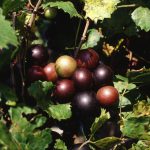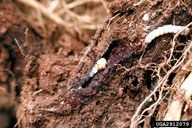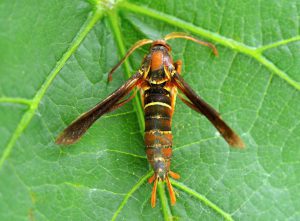Getting Started

Fruit crops, like growing grapes, provide rewarding yields throughout the year when diversifying your plant selection. In other words, choose several types of fruit trees and different cultivars within each fruit tree type. However, farming entrepreneurs have many decisions to make when choosing which fruit crops to invest their time and money. The upcoming series of articles will focus on different fruit trees or shrubs starting with Muscadine grapes.
The determination of which crop fits your budget is the first hurdle to jump. Right behind this hurdle is finding markets to sell your fruit. Is there a market locally, statewide, or nationally? More so, how much do you know about growing the specific crop. What are the cultural practices? For example, pruning schedule, irrigation, fertilization, and potential pesticide practices are important cultural operations you should be familiar with when choosing your crop. How much time do you have to devote to raising fruit crops? Some crops require extensive time inputs and several years before you can reap the yield. If you are balancing an urban, hobbyist, or small farm operation part-time while holding a corporate world job full-time, time is precious.
Smart decisions made early assist in the success of growing fruit crops. During the series of articles, these areas will be addressed for a few common fruit crops. Furthermore, I will briefly discuss cultivars, maintenance, and a few common pests and diseases. If you need in depth information, please follow-up with me or your local county extension office for cultural resources, as well as grant and cost sharing resources to grow fruit crops.
Fun Facts – How many of these facts did you know?
- Berries were called berries long before scientists botanically catalogued them as such.
- Not all berries are small and squishy. Watermelon is a berry, botanically.
- Not all berries have smooth skin. Kiwis are berries, botanically.
- In fact, raspberries, blackberries, and strawberries are not true berries – their seeds are on the outside.
- A grape is a true berry but, it does not have the word “berry” in its name.
- A tomato is a true berry, botanically, but culinarily speaking, we refer to it as a vegetable.
A true berry come from one flower with one ovary and must have two or more seeds on the inside. True berries have 3 parts: an outer skin, the mesocarp contains a “fleshy” pulp, and the center that contains seed(s) in a gel-like endocarp.

Back to Growing Grapes
Boy, can I digress on fun facts. Let us talk about growing muscadine grapes in Florida! A perspective grape grower has so many considerations before ever planting a cane into the ground; planting requirements, marketability, yield for the different grape types, but mostly, the costs to install and plant a vineyard. Grapes have expensive upfront costs than the majority of fruit crops. These expenses could prohibit a beginning farmer unless they are buying a pre-existing vineyard. The trellis system is extremely costly (> $25K), yet the most vital part of the farm! However, if trellising is installed correctly, trellising will last many years.
Trellising
Let’s talk about the vineyard installation costs. The cost to install the trellis system is influenced by the cost of materials (posts, bracing, wiring, tying material, and staples), labor, and overhead (interest and taxes for land). Once minimum wages increase, the cost of labor, for the producer, will increase. We will start to notice an increase in purchasing all our crop commodities as labor costs are absorbed by the consumer. Hardware, posts, plants, labor, and overhead are estimated @ $22,000/acre if starting from scratch. The good news about the plants, if they are properly cared for and renewed on a regular basis, the plants can outlive the farmer. Some varieties have been noted to live 75 years or more.
The Many Cultivars
The University of Florida, IFAS has a grape breeding program. Researchers are attempting to reduce the thickness of the muscadine grape’s skin to make the grape more appealing as a table grape. Explore the cultivars and you can choose the cultivar that works best in your growing environment. ‘Blanc DuBois’ and ‘Southern Home’ are two older cultivars still grown today. However, ‘Eudora’, ‘Delicious’, Southern Jewel’ are newer cultivars as well as some numbered cultivars that have yet to be named. Check out our publication on grapes. The Bunch Grape. If you are growing grapes, successful grape yields should not be expected until year two and possibly year three for some of these cultivars.
Grape Management
Pruning is probably the most cumbersome and time consumptive chore. Timing and picking the right month during dormancy are important elements as each differs by your Florida region. In our central Florida county, we prune from January to February 15. The northern counties can continue pruning until mid-March, while the southern counties would stop pruning after January. Where and which cane to cut will take skill and if not done correct, you may cause death to the cane. Lastly, sanitize your pruners between plants, you never know what disease pathogen lingers.
When fertilizing grapes, you have many choices of formulations from organic to non-organic sources. You can work with your county extension agent for the best guidance in your situation. For homeowners, a conventional 6-6-6 or 8-8-8 would fit you needs. Whichever blend you get, make sure micronutrients are included. Fertilize when the new growth shows up. Usually this is in early spring and may continue for a few months. Consider spreading out your fertilizer applications instead of applying the total quantity in one feeding. Three feedings a year is best. Homeowners, some counties have fertilizer restrictions.
General Pests

The most important pest to recognize when growing grapes in Florida is Pierce’s disease. Pierce’s disease devastated Florida’s grape industry. It is a bacterial disease vectored by a leafhopper insect. Our warm, humid weather assists its spread. Although we have resistant cultivars, we must still watch for the disease. Its scorched-looking appearance on the leaf edges and “green islands” on brown stems help with identification. In our region, a farmer should be scouting for the symptoms when the weather turns warm in May to early June and earlier if we experienced a drought period in the spring. When possible, choose resistant cultivars to reduce your worries.


Minor Pests
There are minor insect pests; however, the grape root borer is a major insect pest to keep your scouting eyes open for. The adult stage is a moth, and the larval stage, a caterpillar that bores on the root system is active below the soil. It is hard to detect and when the larvae infestation increase, a symptom is vine decline. The moth stage is noticeable from late June to mid-September. Although bait stations work by trapping the adults, the borer stage is causing the damage. Pheromones are used for mating disruption. As far as the larval stage, there is only one labeled pesticide, Lorsban. This pesticide can damage the fruit and foliage through drift. For commercial producers, work with your county extension agent on additional pest management practices.
Keeping your canes healthy by using the correct cultural requirements is the number one combat against many pest issues. If you find an unidentifiable pest, take a photo or bring it into the UF/IFAS Extension Office near you.
Get connected
Are you intrigued to grow grapes in Florida? Travel around Florida to the various vineyards to see the many ways fruit farmers grow Muscadine grapes. Locate a Florida Vineyards
If you want to learn more about growing muscadine before you plant a vineyard, join the Florida Wine and Grape Grower Association (FGGA). https://www.fgga.org/
Lisa Hickey, Sustainable Ag & Food Systems Extension Agent assists with questions about growing fruit and vegetable crops in Manatee County. Lisa.Hickey@ufl.edu or (941)722-4524, extension 1817.
 0
0
